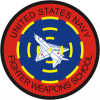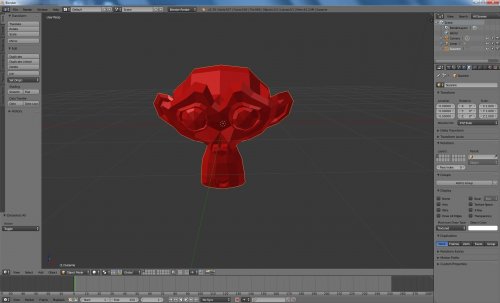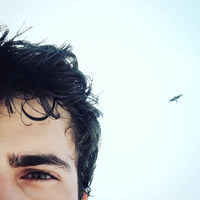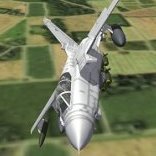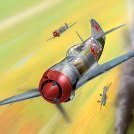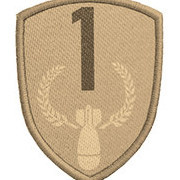Leaderboard
Popular Content
Showing most liked content on 05/06/2018 in all areas
-
10 pointsFor virtual pilots the question of when to ditch your drop tanks is an easy one, that’s right when you feel like it! Of course but when it comes to real world use it has never been that straight forward. So how have they been used in combat over the years? Older viewers may remember the Yankee Air Pirate team actually disabling tank jettison in some of their missions for Wings Over Vietnam to stop players dropping them ha. Quite frankly no one gave a toss about these rather mundane items until the F-35 showed up it seems when all of a sudden they became a massive burden on older generation jets with arguments going to the point of stating they couldn’t even be jettisoned! So now for a rather exciting history of some drop tank usage in combat. A bit of background Drop tank usage became common in WWII, and most will know about P-51s and P-38s on Escort over Germany with drop tanks which were jettisoned when the German fighters showed up. The need for this was to extend the range of the aircraft. [doh really] P-51 flight with drop tanks (Historylink101.com) So, couldn’t they just put more fuel internally? You may notice that tanks used in WWII were relatively small……..piston engines didn’t need that much fuel compared to jet engines. But, by the late 1950s drop tanks had become much larger because the Jet engines were getting more powerful and thus needing much more fuel. More Jet fuel means more weight and fuel is very heavy and takes up space, so if someone is designing a fighter with a set of performance requirements they often had to keep internal fuel to a minimum and put the fuel to meet the range requirement externally in drop tanks. The idea being that the pilot flies to the combat zone on drop tanks but has to jettison the tanks when performance was required. Into the Korean War era Jettisoning tanks was not always as smooth as in flight sims. May 20 1951 James Jabara was part of a 4 FIW fighter Sweep over Sinuju. As soon as MiG-15s were sighted the order came to drop tanks and Jabara punched them but only the left (Port) tank dropped. Stuck with one tank he was supposed to return to base but disregarded orders and managed to get one confirmed kill (by both sides) and damage a second despite the asymmetric control problems he must have been having. F-86 v MiG-15 over Korea (Troy White) F-105 and Vietnam era In this era dropping tanks was common but again didn’t always go without drama. “We never did figure out why they had to drop them right on top of us, and I can assure you that a 20 foot long fuel tank in the face can ruin your entire day.” (J Broughton) So wrote Jack Broughton in 1969 regarding his F-4 escorts, and in Vietnam, flights sometimes even dropped tanks just to go into the combat area clean. This also applied to some Thud drivers as well it appears although Broughton states he preferred to hang on to the tanks if he could for ResCAP. Basically in a ResCAP [Rescue CAP ] situation if the F-105 gets low on fuel they would leave the combat area to Air to Air Refuel, but it needed the tanks to get back to the combat area again for any useful period of time. If they knew they wouldn’t have to refuel again during ResCAP (e.g. getting dark) dropping the empty tanks was done anyway to increase endurance [due to the reduction in Drag and weight]. F-4s had to drop their centerline tanks at least to be able to fire AIM-7s, and ideally ensure they were flying at a speed and attitude / AoA [Angle of Attack] where the tanks didn’t hit the aircraft after jettison and ruin the pilots day! In 1973 Paul Howson fired two AIM-7E-2 Sparrows and both hit the centerline tank although luckily they didn’t penetrate it. Although he thought he had jettisoned the tanks earlier the centerline tank was still attached due to a failure. F-105D Thuds with a KC-135A (USAF) “It is hard to figure out how we can go to the Moon, yet we can’t build a fool proof system that will allow you to let go of a big blob of a tank when you want to.” (J Broughton) Picking up SAM activity the flight of Thuds dropped the tanks, but the curse of the hung drop tank affected one of the flight. The drop tanks now being bigger was a bigger problem because that one aircraft with a hung tank now needs to use a lot more fuel to keep up with the flight, or the rest of the flight needs to fly slower through the danger area! On one mission Jack discovered a failure on the 650 Gal tank that meant he couldn’t transfer fuel from the A-A tanker (KC-135) so opted to jettison it when empty on the way there. Again, getting rid of the tank when empty increased endurance enough for the mission by reducing overall drag and weight. Meanwhile over Israel Typically, Israeli pilots jettisoned the drop tanks when they were vectored towards any suspected enemy aircraft. During the Yom Kippur War this got to 50 drop tanks jettisoned per day, and they were jettisoning them even if the contact they were vectored to was false or friendly. To avoid such waste the policy was changed so they would only drop them once they had visually acquired their targets! On the 14th April 1969, Rouven Rozen had a bit of a pilot fail when he forgot to jettison the centerline tank on his Mirage IIICJ and ended up with a MiG on his tail after some rather sub-par maneuvering. Luckily the MiG pilot wasn’t so hot and he managed to pull him into a scissors and turn things around by getting behind the MiG. In another instance Iftach Spector was flying towards contacts they were vectored to on their radar which turned out to be Drop tanks that had been jettisoned by MiGs falling from the sky. IDF Mirage IIICJs (dailykos.com) The 4th Generation arrives When the F-15/16 came along they had the same design concept as the previous generation F-4s which was fly to the target on external fuel and jettison them for combat however there was one major change. The drop tanks were manufactured to a higher quality and could be used at 9G when empty. Most of the F-4 drop tanks in Nam were ferry tanks and were not really stressed for combat as such but made good canoes. This change no doubt drove up the complexity and cost of the tanks and provided more incentive for the air force to not just jettison them for the hell of it. Some of those drop tanks were converted into canoes by enterprising Vietnamese farmers (Aviationist.com) Into the Storm Now for some examples from more recent conflicts, typically they are jettisoned in emergency situations which includes any A-A engagement, flame out or SAM being fired at you. Desert Storm had its fair share of A-A and A-G action, here Jerry Oney in an F-15E taking a big risk: "Well there we were, a couple of the USAF’s finest, flying the mighty Strike Eagle at around 2000ft below a mostly scattered cloud deck in a two-mile trail at 500kts conducting a road recce for some scuds. Even then I was thinking “this isn’t the greatest idea in the history of the earth”. I was soon proved correct as we flew past this Iraqi airfield and saw the smoke trail of an SA-7, or maybe an SA-9, heading past us and towards lead. The next bit of action seemed compressed into about two seconds or less – lead broke hard into the missile in an attempt to defeat it, I watched the thing overshoot and detonate about 500ft above lead, Bill [the pilot] manoeuvred hard to avoid lead as we now had a face full of F-15E heading towards us. Damn an Eagle can turn. I felt all our ordnance come off the airplane as Bill calmly punched the jettison button as part of our attempt to avoid hitting lead and get our weight down in anticipation of another shot coming our way." F-15Cs with drop tanks (USAF) Cesar Rodriguez flying an F-15C describes one engagement with a MiG: "…so the western AWACs called on GUARD, Pop up contacts, 330 degrees for 13 miles. At 13 miles I had no option but to engage without any SA [Situational Awareness] , so I directed an in-plane turn to 330 degrees, jettisoned wing tanks and put my radar into the location of the target….." Here is another account from Rhory Dreager and Rodriguez of a different engagement in an F-15C: "We do not want to get into any turning merges if we did not have to, so we get our MiG-23 EID [Electronic ID] and AWACS clearances out of the way well before we could shoot. The MiGs were flying at 500ft, and we were flying a cut off intercept on them. At about 40 miles, AWACs told us that one of the MiGs had returned home, so we now had a radar picture of a three-aircraft “Vic” – one guy out in front and the other two guys flying behind and either side. Rodriguez added that RC-135 Rivet Joint also confirmed the EID on the MiG-23s. Dreager ordered a jettison of wing tanks to allow better maneuverability and greater speed with which to increase their WEZ." 17 Jan 1993 F-16C pilot Craig Stevenson was on a no-fly zone patrol with an F-4G over Northern Iraq when a MiG-23 started darting to the no-fly zone. As soon as AWACs had identified the MiG as hostile and called “commit” Craig jettisoned his nearly full fuel tanks but held onto his bombs. “At .95 mach I was well above the selective jettison design limitation for the fuel tanks, and the aircraft was quick to let me know. The jettison was so violent I remember looking back at my horizontal stabilizers to make sure they hadn't been damaged by the fuel tanks.” Air Force Magazine Note that even aircraft that use drop tanks do not always have to use them in combat, especially where A-A tankers are available. In Desert Storm F-16s of the 363rd FW(P) Forward deployed to King Khalid Military City AB in Saudi Arabia with A-10s meaning they could deploy with 4 x MK-84s as standard load-out with no drop tanks: USAF F-16s at KKMC during the Storm - foreground is Block 25D #84-1257 of 17TFS (USAF) Fighters without drop tanks Just to be awkward there have been a few fighters designed post Korean war that have not had the option of using Drop Tanks, these include the F-8 Crusader (non J), Su-27 Flanker, and the F-35 Lightning II. F-8 Crusader (worldwars.net) This means that when fully fueled on take off they have a much higher relative internal fuel load-out and weight because they are carrying the fuel that others carried in drop tanks. So, until the Su-27/F-35 get their fuel down to about 60% say their relative performance is significantly reduced in terms of subsonic climb, acceleration and overall turn performance. However, the lack of drag from large drop tanks will mean they can have better acceleration and higher practical speed through the transonic and supersonic regions of flight when only carrying light to no external stores. These jets also include fuel dump mechanisms that allow them to dump fuel for emergency situations such as an emergency landing. With this approach you also need a very high thrust engine to overcome the extra fuselage size, weight and drag that was put there to hold the extra fuel in the first place. Su-27 intercepts a Swedish ELINT aircaft (Swedish AF) Are drop tanks really the best way of doing things? Valid arguments against include that they take up pylon space, can cause problems if they fail, and impose performance limitations on an aircraft. Also some of the fuel in the drop tank is needed just to offset the extra weight and drag. Logistics of Drop Tanks can be an issue in terms of maintenance and getting enough to a squadron. Did any squadron ever run out of drop tanks post Korean War? [Answers on a post card because I am not aware of any on the Western side]. Cost is another thing that is brought up, it is however much cheaper to jettison the tanks rather than lose the entire aircraft and pilot. Any plus points? Rather good at extending range [duh] You can jettison them, unlike CFTs and bigger airframes. Erm….sometimes can be used to land on if they are empty and the gear fails [or you forget to lower it]: F-16C Block 25 lands on tank at Luke AFB June 17 2004 (F-16.net) The Future Seems the arguments are mute because with F-22, J-20 and Su-57 using drop tanks, and talk of some being developed for F-35 they are not going anywhere in my lifetime. Chegndu J-20 February 2017 (Elephant) Sources Thud Ridge (J.M.Broughton, 1969) Crecy Publishing James Jabara (Sherman S 2001) online Acepilots.com http://acepilots.com/korea_jabara.html Israeli Mirage and Nesher Aces (Alomi. S, 2004) Osprey Publishing F-15E Strike Eagle Units in Combat 1990-2005 (Davies.S, 2005) Osprey Publishing F-15C Eagle Units in Combat (Davies.S, 2005) Osprey Publishing USAF F-4 Phantom II MiG Killers 1972 -73 (P.Davies, 2005) Osprey Publishing Sukhoi Su-27 (Gordon.Y, 2007) Midland Publishing Title Photo credit USAF
-
6 pointsTOPGUN. What else ? Well... just to piss off the Air Boss, I decided to buzz the tower again. Long live to the 80's NAS Miramar ! Thank you JSF_Aggie !
-
4 pointsSupermarine Skylark F.1 - No.5 & No.11 Squadrons, RAF Fighter Command, 1961 The adoption of the earlier Dassault Mystère IV (licence-built by Supermarine Aviation as the Siskin F.1) encouraged Dassault to offer the forthcoming Super Mystère to the UK Government to meet the RAF's requirement for a Venom replacement for overseas use. However, by mid-1955 the requirement had changed to that for a supersonic interceptor-fighter for RAF Fighter Command to supplement the Hunter F.6 and provide a lead-in to the Mach 2 English Electric Lightning. By this time the Super Mystère prototype had flown (initially powered by a Rolls Royce Avon RA.7R) and the successful early flight-testing gave the RAF the confidence to quickly draft an official Operational Requirement based around a Super Mystère powered by the proposed Avon RA.21R and armed with 2 x 30mm ADEN cannon. Supermarine were selected to licence-build the Super Mystère at South Marston as the Supermarine Skylark F.1 for RAF Fighter Command and with an initial order for 120 aircraft and soon supplemented with an order for 45 Skylark FR.2's for RAF Germany (carrying centreline Vinten camera pods). Whilst Dassault quickly moved on to the Mirage family of delta-winged fighters the Skylark was further developed by Supermarine as the FGA.3 fighter-bomber for the RAF and also exported to Finland, India and Saudi Arabia.
-
3 pointsit's got a lot of small, extra bits hanging off it, some "thing" in the aft radiator outlet ducts; needs the outer wing meshes cut from the (single piece) wing mesh. Maybe some other stuff I can't see in MAX or the LOD viewer. Also explodes on the runway at mission start. The MAX file is dated 2006, so will need updating to the latest version. As you can see, I have MAX 2009, so I can open the file; just never learned how to work the damn thing!!! If someone can finish it, that would be great. I"ll have to check with Crusader, of course, as this was one of Oli, but I"m sure it'd be ok. As you can see, it's mapped and skinned (and decaled, too!) already. Making a Mk V out of it would take a LOT of work; there's some major differences; not the least of which is the 3 bladed prop, different radiator (oil cooler) under the right wing, and so forth. But I have plenty of data (books on pdf)
-
2 points
Version 0.3
464 downloads
I tried to implement the exporter only based on the information I found by investigating LOD files. I'm not a 3D Modeler myself. I only tested the exporter with rather simple object (hierarchies). The bottom line is that I have no idea if the exporter works for you. So please give feedback. Note: This plugin requires blender version 2.78 or 2.79. It is not compatible with blender versions 2.8+. 1.) Installation Open the Blender User Preferences - Add-ons Tab (File -> User Preferences... -> Add-Ons) Click "Install from File..." Browse to and select the exporter python script "io_export_sf2_lod.py" Click "Install from File..." (or double click on the script name) In the Add-Ons Tab under Supported Level select Testing and enable "Import-Export: Strike Fighters 2 LOD Exporter" The LOD exporter is now installed and enabled. Under File -> Export you should see the menu item "Strike Fighters 2 LOD (.lod)". It's greyed out until an exportable object is selected. 2.) Usage Select the object you want to export and click File -> Export -> Strike Fighters 2 LOD (.lod) The file browser opens. In the lower left area you see the LOD exporter options: -enable/disable writing the out file (text file with information about the exported object(s)). -enable/disable animation export -allow decals: This option is similar to the option in the original TW-Exporter: "Exporting using AllowDecals=0 causes the vertex to be shared, so it can reduce the size of the .LOD but also causes decals to "bleed" along the edges." This dialog setting is used as default for all objects to be exported. However, it can be overwritten by each individual object via the custom object property "AllowDecals" = 0(false) or 1(true) The selected object and all child objects are exported. Two custom object properties are supported by the exporter: -AllowDecals = 0 or 1, This option is similar to the option in the original TW-Exporter: "Exporting using AllowDecals=0 causes the vertex to be shared, so it can reduce the size of the .LOD but also causes decals to "bleed" along the edges." -UseFlatNormal = 0 or 1, if set to 1 then all vertex normals are pointing straight up (normal = (0,0,1)) in the objects local coordinate system. Please note! The objects must meet the following requirements: -No scaling in the Transform Properties allowed (that means: scale x = y = z = 1.0). If your object has scaling, it should be applied to the mesh (Ctrl-A) Scaling is only allowed for animations. -A material must be assigned to the object. Only the first material of an object is exported. The following material parameters are exported: -Diffuse Color (the lod file format also contains ambient color. Currently the exporter set ambient color = diffuse color) -Specular Color -Specular Intensity -Specular Hardness (I think in 3ds Max it's called glossiness) -if "Shading -> Emit" > 0.0 then self illumination is enabled -Transparency (if transparency is enabled, then the object doesn't cast and doesn't catch shadow. if transparency is disabled, then the object cast and catch shadow. The specific LOD format version the exporter writes, doesn't support arbitrary cast/catch shadow combinations. The other LOD formats I don't understand enough (yet). Sorry!) -Alpha -Mirror Reflectivity -Diffuse texture image name (as diffuse texture the exporter uses the texture where "Influence -> Diffuse -> Color" is enabled) -Normal map texture image name("Influence -> Geometry -> Normal" is enabled and the Normal value is also exported) -Specular map texture image name("Influence -> Specular -> Intensity" is enabled) -Normal and specular map can only be used together with a diffuse map. (If I exported a normal or specular map without diffuse map, then the LOD wasn't shown in the game or the game crashed. I don't know why...) Animation Export: This exporter supports the following object animation types: location, rotation and scaling. Frames 10, 20, 30, ..., 100 are exported as animation 1 Frames 110, 120, 130, ..., 200 are exported as animation 2, ... 3.)Credits: Thanks to logan4 and angelp who provided me with specific lod files that helped me to understand the lod file format better. 4.)Changelog: Version 0.1: -initial release Version 0.2: -bugfix: didn't work in blender version 0.79 Version 0.3: -animation support -added custom object properties: "AllowDecals" and "UseFlatNormal" Update 29.03.2025: I think it's best for the community if my tools are freely downloadable for everyone. External download link: https://www.dropbox.com/scl/fi/71mc5oztx01xer7m2eq71/io_export_sf2_lod.py?rlkey=aid9klb0azyfu5tm2t7a3q7pc&st=n60cb7n0&dl=0 -
2 points
-
2 pointsWell, the grey and wraparound schemes came from one of the packages found here at CA. The SEA scheme was done by me using the templates also found here. And YES, I do have the Alabama ANG unit. That one is in the Desert Storm Mod, if my memory serves me well. 26TRW.7z
-
2 pointsTOPGUN. What else ? No points for second place Meet the Agressors : The famous Hangar Nr. 2 Time to buzz the tower ! Hope you enjoyed, feel free to post your screenshots !
-
2 points
-
2 points
-
1 pointG'Day all, It's been a while, but that doesn't mean I haven't been working! This is my latest: the RAAF's new all through pilot training aircraft. 2FTS paint scheme: Bump and specular mapping: ARDU (aircraft Research and Development Unit) paint scheme: 1FTS and CFS (Roulettes) paint scheme: Finally, 4 SQN (FAC): I'm just doing some final touches on the flight model but I'm planning on releasing the aircraft with my AT-6 pit as a place holder while I work on a pit for it. Dels
-
1 point
-
1 pointThanks amariani,that's what I search for!!!! Yakarov,your skins are beautiful! And last sundowner.I think there're more Phantom Phanatic than you think,personally I'll build each MiG-killer for both USAF and Navy in the 'Nam...I collected a lot of decals and kits but think that probably I'll die before finish my projects!
-
1 pointI just wish I had the MAX files from the TMF Mk.1 -- it'd be easier to make the Mk.V from that by simply added the cannon barrels and magazine bulges ------------------ Ok, Volker, I'll get you everything I have, the model in game, inis, and the MAX file as soon as I can. I say we simply stick to finishing it as the Mk.IX. Easier, simpler, less work and all that! Many thanks from me, the Mod Mafia and the community!
-
1 pointDitto. Either that or it could also be a blank MAPENEMYICON.tga file inside the Flight folder. Remove it if you want to see Red planes showing up on the map view.
-
1 point
-
1 point
-
1 pointwell why were ya hiding it amariani ? on a serious note, the tail hook warning should come off the low viz versions (including wraparound), but nice catch on teh style of the dark grey on the nose (most units just did a anti glare on the top, not wrapped) you wouldnt have some Alabama ANG hiding too would ya?
-
1 point
-
1 pointSupermarine Siskin F.1 - No.43 Squadron, RAF Fighter Command, 1956 The early 1950's was a difficult time for RAF Fighter Command. The obsolescent Meteor F.8 formed the mainstay of Fighter Command but it could barely catch the RAF's Canberra jet bombers and would have been hopelessly outclassed by MiG-15's if the Cold War had turned hot. But just at the time that Fighter Command should have been looking forward to receiving the modern swept-wing Hawker Hunter and Supermarine Swift fighters both programmes hit severe technical problems. especially the doomed Swift. Even before the decision to cancel the Swift fighter programme (taken in February 1955) the Air Ministry were looking for an 'off the shelf' purchase of an interim 'stop-gap' type and although the North American F-86 Sabre was procured in substantial numbers the desperately poor balance of payments situation with the US prevented further purchases. Dassault had previously offered the Mystère IIC to the UK Government and had been turned down. But in November 1952 an RAF evaluation team were sent to Istres to evaluate the Mystère IV and submitted an enthusiastic report to the Air Ministry who decided to place an order for 200 Mystère IV's to be licence-built by Supermarine Aviation with Rolls Royce Tay engines. Entering service in March 1955 as the Siskin F.1 this fine aircraft was used by RAF Fighter Command until the early 1960's with the subsequent Siskin FGA.2 fighter-bomber serving in RAF Far East Air Force until 1970.
-
1 pointBut that's not all. But, to be honest, I also don't know where to get Pfalz D.III (not D.IIIa)
-
1 point
-
1 point30 April 1959, Convair B-36J-1-CF Peacemaker, serial number 52-2220, landing at Wright-Patterson Air Force Base, Dayton, Ohio. The very last flight ever made by one of the giant Cold War-era bombers.
Important Information
By using this site, you agree to our Terms of Use, Privacy Policy, and We have placed cookies on your device to help make this website better. You can adjust your cookie settings, otherwise we'll assume you're okay to continue..


